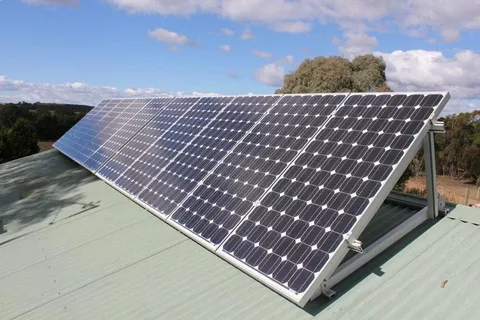Mastering Your Stand Alone Power System: A Step-by-Step Guide

A Stand Alone Power System (SAPS) operates independently from the main electrical grid, providing a self-sufficient energy solution. This system typically generates electricity using renewable energy sources such as solar panels, wind turbines, or a combination of both. These sources are especially advantageous for remote areas where connection to the grid is impractical or costly.
The core components of a Stand-Alone Power System include energy generation units, battery storage, and inverters. Solar panels or wind turbines capture energy from the sun or wind, converting it into electrical power. This power is then stored in batteries for use when generation is low, such as at night or on cloudy days. Inverters play a critical role by converting the stored direct current (DC) electricity from the batteries into alternating current (AC), which most household appliances use.
By effectively integrating these components, a Stand-Alone Power System ensures a consistent energy supply tailored to specific needs. This system offers reliability and independence and promotes environmental sustainability by reducing reliance on fossil fuels. Understanding SAPS's fundamental principles and components is essential for anyone considering this energy solution.
Assessing Energy Needs in Stand-Alone Power System
Understanding energy consumption is crucial for designing an effective Stand-Alone Power System. Begin by listing all electrical devices and appliances that the system will power. For each item, note the power rating in watts and estimate the hours of usage per day. This will help calculate the total daily energy demand in kilowatt-hours (kWh).
Consider seasonal variations in energy use, as heating and cooling requirements can significantly impact overall consumption. Additionally, account for any future expansions or additional devices that might be integrated into the system.
Next, the peak energy demand, the highest power consumption level at any given time, is evaluated. This is important for sizing the inverter and battery storage. The inverter must handle the maximum load, and the battery storage should be sufficient to meet energy needs during periods of low generation, such as overcast days or at night.
Finally, review energy efficiency measures. Reducing consumption through energy-efficient appliances and practices can significantly lower the system's size and cost. Properly assessing energy needs ensures that the Stand-Alone Power System is reliable and cost-effective.
Choosing the Right Components of Stand-Alone Power System
The appropriate components for a Stand-Alone Power System are essential for optimal performance. Key elements include solar panels or wind turbines, battery storage, charge controllers, and inverters.
Choose high-quality solar panels or wind turbines based on your energy generation needs. Solar panels should have a high efficiency rating and be suitable for the local climate, while wind turbines must be matched to the wind conditions of the installation site.
Next, select the right battery storage system. Batteries should have a sufficient capacity to store energy for periods of low generation. Consider battery types such as lithium-ion or lead-acid, each with distinct advantages and lifespan.
Charge controllers are crucial for regulating the power going into the batteries, preventing overcharging or excessive discharging. Opt for a charge controller compatible with the chosen battery type and capable of handling the system's voltage and current.
Inverters are vital for converting DC electricity from the batteries into AC electricity for household use. Ensure the inverter has a capacity that meets peak energy demands and is reliable for continuous operation.
Finally, monitoring and control systems should be integrated to track energy production, storage levels, and overall system performance. This allows for real-time adjustments and maintenance planning, ensuring the system remains efficient and effective.
Installation Process of Stand Alone Solar System
Begin the installation by selecting a suitable location for the Stand Alone Solar System. The area should have maximum sun exposure, ideally facing south in the northern hemisphere or north in the southern hemisphere. Ensure the site is free from obstructions like trees or buildings that could cast shadows on the panels.
Secure the mounting brackets to the chosen surface, whether a roof or a ground-based structure. Attach the solar panels to the brackets, ensuring they are tightly secured to withstand adverse weather conditions.
Next, run the wiring from the solar panels to the charge controller. Use weatherproof conduits to protect the cables from the elements. Connect the charge controller to the battery storage system, following the manufacturer's guidelines to ensure correct polarity and voltage compatibility.
Install the inverter in a well-ventilated area close to the battery storage. Connect the inverter to the battery system, ensuring all connections are tight and secure. Link the inverter to the household electrical system through a dedicated circuit or by integrating it into the existing electrical panel.
After all components are connected, double-check all wiring and secure all connections. Switch on the system and monitor the initial performance to ensure everything functions as expected.
Testing the Stand Alone Solar Power System
Once the installation is complete, thoroughly test the Stand Alone Solar Power System to ensure its proper functioning; begin by checking all electrical connections and verifying they are secure and installed. Power up the system and observe the charge controller, battery storage, and inverter for any error indicators or unusual behaviour.
Monitor the charge controller to ensure it accurately regulates the power flow from the solar panels to the battery storage. Verify that the batteries are charging correctly by checking the voltage and current levels. Examine the inverter to confirm it converts DC electricity from the batteries into AC electricity without any issues.
Perform a load test by powering various household appliances and devices. Observe the system's response to different load conditions, ensuring it can handle peak energy demands without faults. Check for any fluctuations in power output or instability in the energy supply.
Lastly, monitoring and control systems are used to track the overall performance of the stand-alone solar power system. Ensure all components are operating efficiently and within their specified parameters. This comprehensive testing phase is essential to identify and address potential issues before relying on the system for everyday energy needs.
Maintenance and Upkeep OF Stand-Alone Solar Power System
Compliance with local regulations is crucial when setting up a Stand-Alone Power System. Consult with local authorities to understand the legal requirements, including permits and inspections. Ensure that the system adheres to electrical codes and standards specific to the region.
Safety is paramount. Use certified components that meet safety standards. Install surge protectors to safeguard the system against voltage spikes. Ensure all electrical connections are secure and insulated to prevent short circuits.
Proper grounding of the system is essential to avoid electrical hazards. The battery storage area should be well-ventilated to prevent the build-up of gases, especially if using lead-acid batteries. Fire safety measures must be in place, including having fire extinguishers rated for electrical fires.
Signage is also important. Clearly label all system components and include warning signs where necessary. This helps identify potential hazards and facilitates maintenance.
Engage qualified professionals for installation and maintenance tasks to ensure adherence to safety protocols. Regularly update yourself on any changes in legal and safety regulations to keep the system compliant. Additionally, ensure that insurance covers potential damages or liabilities associated with the Stand-Alone Power System.
Conclusion
A Stand Alone Power System represents a significant step towards achieving energy independence and sustainability. By harnessing renewable energy sources, these systems provide reliable power and contribute to reducing carbon footprints. As technology advances, the efficiency and affordability of components like solar panels, batteries, and inverters will improve, making Stand-Alone Power Systems more accessible to a broader audience.
Future developments may see enhanced energy storage solutions, allowing for better power management during periods of low generation. Innovations in smart grid technology and energy management systems will enable more precise monitoring and optimisation of energy usage, further increasing system efficiency.
Additionally, emerging trends in hybrid systems that combine multiple renewable sources can offer even greater reliability and flexibility. Staying informed about these advancements will allow for timely upgrades and expansions, ensuring the system remains efficient and effective.
Adhering to local regulations and safety standards is paramount to protect both the system and its users. Continuous learning and adaptation to new technologies will pave the way for more robust and efficient energy solutions.
Frequently Asked Questions You Might Have
1. What is a Stand Alone Power System (SAPS)?
A SAPS operates independently from the main electrical grid, generating electricity from renewable energy sources like solar panels and wind turbines.
2. How do I determine the size of my Stand-Alone Power System?
Begin by assessing your energy needs, including the power ratings of appliances and daily usage patterns. This information helps in sizing the system components appropriately.
3. Which components are essential for a Stand-Alone Power System?
Key components include energy generation units (solar panels or wind turbines), battery storage, charge controllers, and inverters.
4. How often should the system be maintained?
Regular maintenance is crucial. Inspect the system components periodically, especially the batteries, wiring, and connections. Follow the manufacturer's guidelines for specific maintenance intervals.
5. Can I expand my system in the future?
Yes, systems can be upgraded by adding more solar panels, wind turbines, or batteries. Stay informed about technological advances to make efficient upgrades.
6. Are there any legal considerations?
Compliance with local regulations and safety standards is essential. Check with local authorities to ensure your system meets all legal requirements.
|
Related Business Listings |





